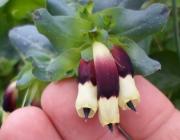Citation:
Abstract:
Acacia nilotica is a ligneous forage tree of the family of Fabaceae (Legumes). This tree has a great agro-forester, sylvo-pastoral and nutritional importance in the arid and semi-arid regions where the plants cover is in a permanent reduction. The first cause is the lack of reforestation project. In addition, the stage of germination for the legume trees meets the problem of the integumentary dormancy (vernalization) and the global warming which limits the germination and the establishment of an important plant population. The germination rate in the nature is only between 5 and 10% according to the forest departments. The effect of a chemical pretreatment to improve the germination was studied by analyzing 3 parameters (germination kinetics; MGT: germination mean time (days) and GRI: germination rate index) after 4 times of incubation (4, 8, 12 and 16 days) in Petri dishes.
The pretreatment consisted of immersion of the seeds in concentrated sulphuric acid (98%) for 7 durations: 0 (Control), 20, 40, 60, 80, 100 and 120 minutes. For all the A. nilotica seeds treated in this study, the increasing duration of the soaking in the sulphuric acid improved significantly (p < 0,001) the germination by reducing the MGT and by increasing the GRI. The best germination reached a rate of 95%, with a reduced MGT (1 day) and a high GRI (47,33±2,64) for 100 minutes of soaking in the sulphuric acid. However, the immersion during 120 min reduced the GRI to (26,5±1,9). Such a pretreatment of 100 min is thus recommended to increase the rate of germination of the acacia trees implanted by the forest services in Algeria.
